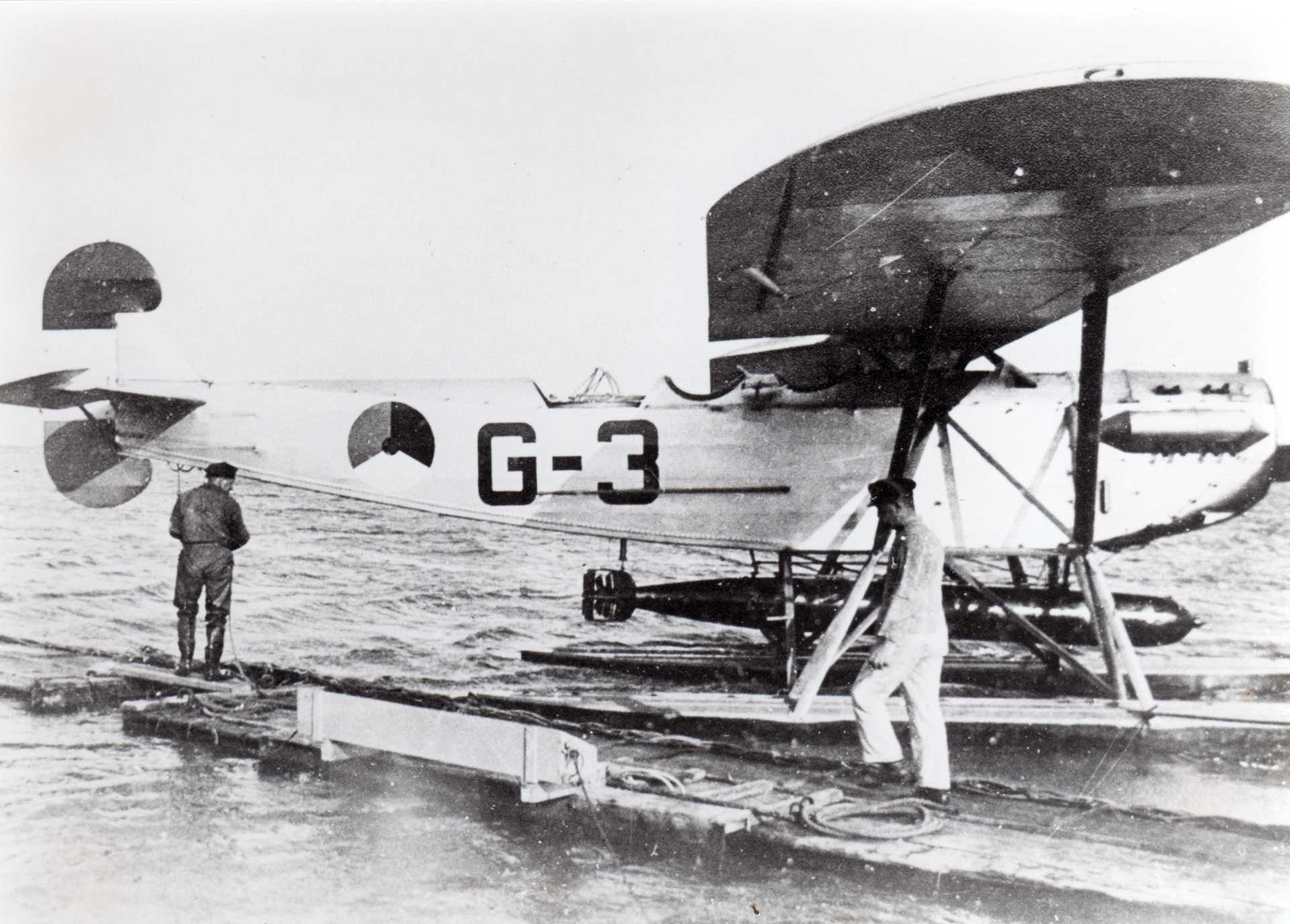Fokker C.VIII en C.VIII W
The C.VIII is a high-decker, also called a parasol decker.
It has a crew of no less than 3 people sitting in the open air.
The C.VIII was briefly employed as a strategic explorer at Aviation Department LVA, but it will remain with one aircraft.
The Naval Aviation Service is more enthusiastic.
However, they want a larger size but with a lighter engine. The latter is puzzling!
The C.VIII W is used as a light bomber and strategic scout. Also referred to as a high-sea scout.
The aircraft is intended for coastal protection in the North Sea and the Wadden Sea. The crew also consists of three people in this type.
The floats do not get a cross connection, which makes it possible to take a torpedo under the aircraft.
A mist installation, to be invisible for a long time, is not successful.
Click on the photo to enlarge the photo
It has a crew of no less than 3 people sitting in the open air.
The C.VIII was briefly employed as a strategic explorer at Aviation Department LVA, but it will remain with one aircraft.
The Naval Aviation Service is more enthusiastic.
However, they want a larger size but with a lighter engine. The latter is puzzling!
The C.VIII W is used as a light bomber and strategic scout. Also referred to as a high-sea scout.
The aircraft is intended for coastal protection in the North Sea and the Wadden Sea. The crew also consists of three people in this type.
The floats do not get a cross connection, which makes it possible to take a torpedo under the aircraft.
A mist installation, to be invisible for a long time, is not successful.
Click on the photo to enlarge the photo
The fate of the C.VIII W at the end of May 1940 (The german invasion of the Netherlands)
In the mobilization period 1939-1940 the C.VIII W aircraft are first located in Veere, Schellingwoude, on the Westeinder Plassen, on the Alkmaardermeer and on De Mok, Texel.
In the first May days for the German, they collect partly at Vliegkamp De Mok.
The G-4 crashed on the Westeinderplassen, on May 14, 1940.
The G-7 and G-9 are fired at De Mok in on 12 May 1940.
The G-8 comes to an end on the beach of Scheveningen, also on May 12, 1940.
Furthermore, on May 14, 1940 the G-1 the G-2 the G-3 the G-5 and the G-6 leave for Boulogne Northern France.
Arrive there around 5am early morning and from there at 11am to Cherbourg Normandy France.
From there again to Brest in Brittany, France.
On May 22, 1940 the North Sea is flown to England and the MLD group arrives in Calshot near Southampton on the south coast.
Finally, the tough tour ends on May 30, 1940 with a substantial north-eastern flight, partly by land.
It ends at Felixstowe naval base at Harwich on the east coast of England.
The G aircraft have been given shelter there for a while.
Together with other English and other Dutch aircraft.
Some have been demolished, but not all devices have become known.
In the mobilization period 1939-1940 the C.VIII W aircraft are first located in Veere, Schellingwoude, on the Westeinder Plassen, on the Alkmaardermeer and on De Mok, Texel.
In the first May days for the German, they collect partly at Vliegkamp De Mok.
The G-4 crashed on the Westeinderplassen, on May 14, 1940.
The G-7 and G-9 are fired at De Mok in on 12 May 1940.
The G-8 comes to an end on the beach of Scheveningen, also on May 12, 1940.
Furthermore, on May 14, 1940 the G-1 the G-2 the G-3 the G-5 and the G-6 leave for Boulogne Northern France.
Arrive there around 5am early morning and from there at 11am to Cherbourg Normandy France.
From there again to Brest in Brittany, France.
On May 22, 1940 the North Sea is flown to England and the MLD group arrives in Calshot near Southampton on the south coast.
Finally, the tough tour ends on May 30, 1940 with a substantial north-eastern flight, partly by land.
It ends at Felixstowe naval base at Harwich on the east coast of England.
The G aircraft have been given shelter there for a while.
Together with other English and other Dutch aircraft.
Some have been demolished, but not all devices have become known.


























